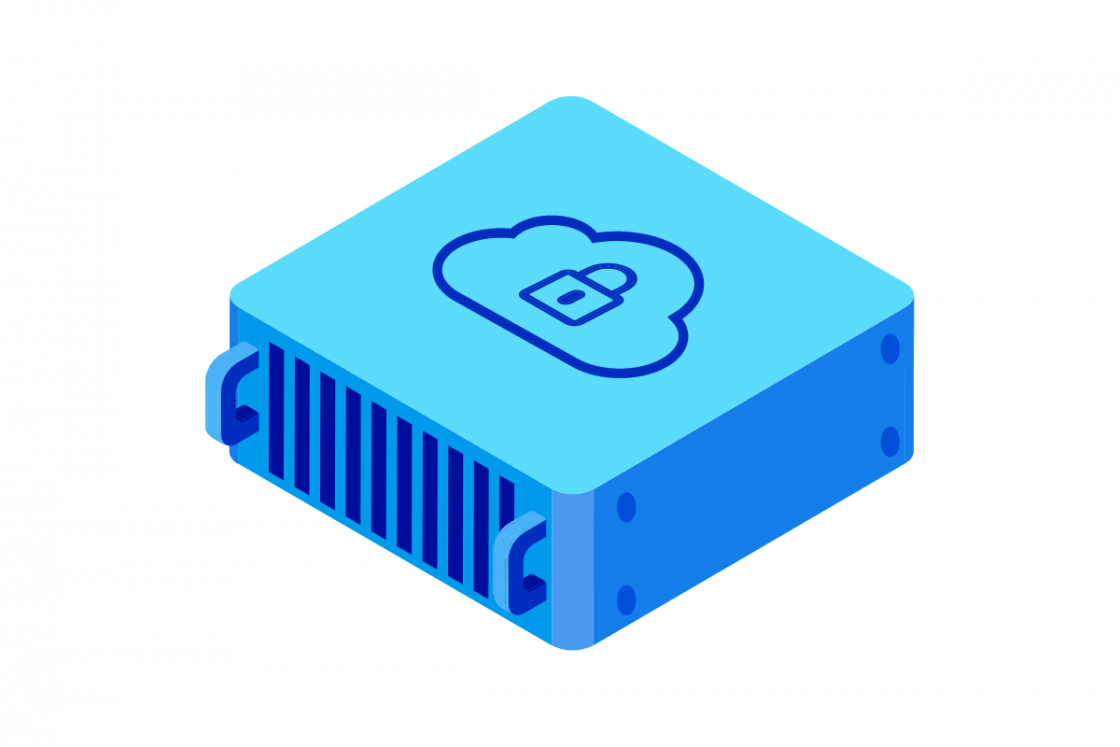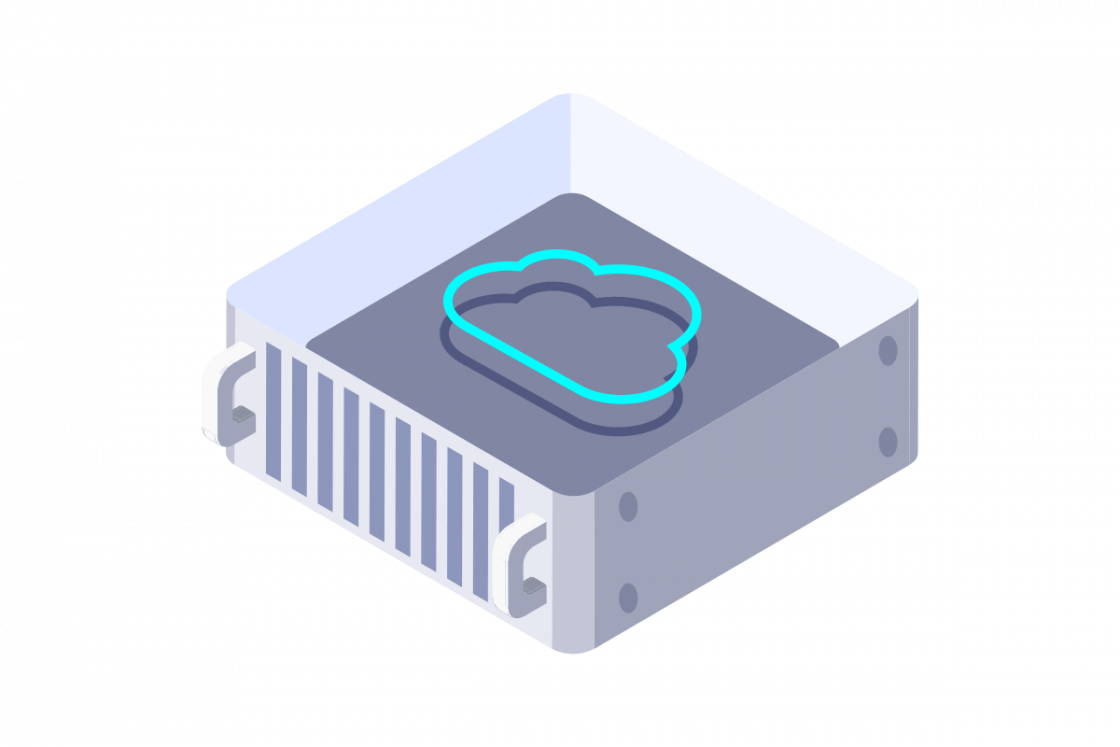What is cloud integration?
Cloud integration is the steps of connecting various cloud-based apps, systems, and data sources with each other, across public cloud as well as with on-premises solutions. Think of it as building digital bridges that allow different software to "talk" to each other and share seamlessly, regardless of where they are hosted.
The primary goal of cloud integration is to unify disparate IT environments, break down data silos, and automate business processes.

This allows organizations to leverage the full potential of their various tools and on-premise infrastructure, creating a cohesive and efficient operational ecosystem.
Whether it's syncing between a CRM and an email marketing platform or connecting a cloud-based analytics tool to an on-premise database, integration makes these interactions possible and streamlined.
Types of Cloud Integration
Cloud integration isn't a one-size-fits-all cloud computing or cloud solution. The specific approach depends heavily on what solutions you're connecting, what info needs to flow, and the overall business objectives.
Generally, integration types can be categorized based on the endpoints involved or the integration patterns employed. Now, we list some common types.
Cloud-to-Cloud Integration
This is perhaps the most common scenario today. Cloud-to-Cloud Integration, often referred to as SaaS (Software as a Service) integration, involves connecting two or more cloud apps or tools.
The goal is to enable info sharing and automation between these distinct public cloud environments. For example, integrating your CRM (like Salesforce) with a marketing automation platform (like HubSpot) or an accounting software (like Xero) allows for synchronized data, streamlined lead management, and automated invoicing.
Cloud-to-On-Premises Integration
Many organizations still rely on legacy solutions or have specific information residency requirements that necessitate keeping some apps and data on-premises a hybrid cloud. Cloud-to-On-Premises Integration, also known as hybrid integration, bridges the gap between your applications and your internal, on-premise IT.
This could involve syncing datacentre data from an HR system to an on-premises payroll system or enabling an analytics platform to access information stored in an internal database. This type of integration is crucial for businesses undergoing a phased migration or those operating in a hybrid IT environment.
Application Integration
Application Integration focuses on enabling different software programs to work together by sharing data and functionality.
This is often achieved through Application Programming Interfaces (APIs). In a cloud context, this means ensuring that various tools (microservices, SaaS applications, etc.) can communicate and exchange knowledge efficiently.
API-led connectivity is a modern approach where APIs are treated as products, managed and exposed to facilitate seamless integration across diverse applications, whether they are online or on-premise.
Data Integration
The core of many integration efforts, data integration involves combining info residing in different sources and providing users with a unified view of that data.
In the cloud, this could mean consolidating data from various SaaS applications into a data warehouse for analytics, ensuring info consistency across different services, or synchronizing data between operational databases and reporting.
Cloud data integration tools and platforms help manage data extraction, transformation, and loading (ETL) or extraction, loading, and transformation (ELT).
Process Integration (Business Process Automation)
Beyond just connecting applications or data, process integration aims to streamline and automate entire business processes that span multiple applications, some of which may be in the cloud and others on-premises.
For example, an order-to-cash regime might involve a cloud e-commerce platform, a CRM, an on-premises inventory system, and an accounting application.
Cloud process integration orchestrates the flow of info and tasks across these to improve efficiency, reduce manual effort, and enhance visibility into the end-to-end process.
The Benefits of Cloud Integration
Adopting integration isn't just about connecting tools; it's about unlocking significant business value.
By enabling seamless communication and data flow between disparate applications and data sources, organizations can realize a wide array of advantages that directly impact their bottom line and operational effectiveness. Here are some of the key qualities of implementing a robust integration strategy:
Increased Operational Efficiency and Productivity
Perhaps the most immediate benefit is the boost in efficiency. Cloud integration automates manual information entry and transfer between options. This reduces the time employees spend on repetitive tasks, minimizes the risk of human error, and frees them up to focus on more strategic, value-added activities. Streamlined workflows across departments lead to faster execution of business processes.
Improved Data Quality and Accessibility
Siloed data is a major roadblock to informed decisions. Cloud integration breaks down these silos, ensuring that data is consistent, up-to-date, and accessible across all connected tools. This creates a "single source of truth," improving data quality and reliability. When everyone in the organization works with the same accurate info, collaboration and decision-making are significantly enhanced.
Enhanced Business Agility and Scalability
Today, agility is paramount. Integration allows businesses to quickly connect novel SaaS programs, adapt to changing market conditions, and scale operations up or down as needed. New services can be onboarded more efficiently, and existing tech can be adapted without major disruptions, enabling organizations to innovate faster and respond more effectively to demands.
Significant Cost Savings
While there's an initial investment, integration can lead to substantial long-term cost savings. Automation reduces labor costs associated with manual data handling. Consolidating tools can also lower IT overhead, maintenance costs, and the expenses associated with managing multiple, disconnected point tools. Furthermore, by leveraging integration platforms (iPaaS), companies can often avoid significant upfront infrastructure investments.
Better Visibility and Insights for Decisions
With integrated tools, businesses gain a holistic view of their operations, customers, and performance. Data from various sources (sales, marketing, service, finance) can be consolidated and analyzed, providing deeper insights that drive more strategic and informed decision-making. Real-time data flow enables managers to monitor key performance indicators (KPIs) accurately and proactively address issues or opportunities.
Improved CX
A seamless flow of info across customer-facing applications (such as CRM, e-commerce platforms, and tools) is crucial for delivering a superior experience. Cloud integration ensures that all interaction points are synchronized, providing a consistent and personalized experience. For example, a sales representative can have a complete view of a customer's history, including tickets and past purchases, enabling more effective engagement.
Streamlined Compliance and Governance
For industries with strict regulatory requirements, integration can help streamline compliance efforts. By centralizing data flows and providing audit trails, organizations can more easily track data lineage, monitor access, and ensure adherence to data privacy and security policies. Automated processes also reduce the risk of compliance breaches associated with manual errors.
Cloud Integration Use Cases
The power of integration truly comes to life when you see it in action. By connecting disparate services and on-premise systems, organizations across various industries can streamline operations, enhance CX, and unlock new efficiencies. Here are some common and impactful use cases:
Synchronizing Sales and Marketing Efforts
Consider a company that uses an online CRM (e.g., Salesforce) to manage relationships and a separate online marketing automation platform (e.g., HubSpot or Marketo) for lead generation and email campaigns.
By integrating these two systems, leads generated by marketing campaigns can automatically flow into the CRM. Sales teams get real-time updates on marketing interactions (email opens, website visits), and marketing teams can segment audiences by sales data (e.g., deal stage, purchase history).
This creates a seamless lead-to-revenue pipeline, improves sales and marketing alignment, enables personalized communication, and provides a 360-degree view of the client journey.
Streamlining Order-to-Cash Processes in E-commerce
Think about an online retailer that uses a cloud e-commerce platform (e.g., Shopify, BigCommerce), a separate inventory management system, an online accounting system (e.g., QuickBooks Online, Xero), and potentially on-premise shipping logistics.
Online integration connects these systems so that when a customer places an order online, inventory levels are automatically updated, a sales order is created in the accounting system, and shipping details are sent to the logistics provider.
This automates a complex process, reduces manual entry and errors, ensures accurate inventory counts, speeds up order fulfillment, and improves financial reconciliation.
Enhancing Customer Service and Support
A business often uses an online CRM, a separate helpdesk or ticketing system (e.g., Zendesk, Jira Service Management), and various communication channels (email, chat, social media).
Integrating these platforms ensures that all customer interactions, regardless of channel, are logged and accessible within the CRM and helpdesk. Support agents have a complete history of customer issues and interactions when responding to queries.
This leads to faster resolution times, more personalized support, reduced customer frustration, and improved overall customer satisfaction and loyalty.
Unifying HR and Payroll Systems
In another scenario, think about a company that uses a human resource knwoeldge system (HRIS) for employee knowledge management and a separate cloud or on-premise payroll system.
Integrating the HRIS with the payroll system ensures that employee info (new hires, terminations, salary changes, benefits info) entered into the HRIS is automatically and accurately reflected in the payroll system.
This eliminates redundant data entry, reduces the risk of payroll errors, ensures compliance with labor laws, and streamlines HR administrative tasks.
Connecting IoT Devices for Operational Insights
Finally, think about a manufacturing company uses IoT sensors on its production line to monitor equipment performance, and this info needs to be analyzed and correlated with production schedules in their cloud ERP system.
Cloud integration platforms can collect data from IoT devices, handle it in the cloud, and then feed relevant insights (e.g., predictive maintenance alerts, production bottlenecks) into the ERP or other operational systems.
This enables proactive maintenance, optimizes production efficiency, reduces downtime, and improves overall equipment effectiveness (OEE).
OVHcloud and Cloud Integration
Discover a comprehensive suite of options designed to meet your every need, from scalable public resources to seamless hybrid and multi-cloud strategies. At OVHcloud, we provide the building blocks for your innovation, ensuring performance, security, and cost-efficiency.

Public Cloud
Unlock a world of possibilities with OVHcloud public cloud solutions. Our robust and versatile platform offers a wide range of on-demand resources, including compute instances, storage, and networking capabilities.

Hybrid and Multi-Cloud Solutions
Navigate the complexities of modern IT with OVHcloud's Hybrid & Multi-Cloud solutions. We understand that a one-size-fits-all approach doesn't work. Our hosting empowers you to strategically combine the qualities of our public cloud, your private infrastructure, and even other cloud providers.

Public Cloud Compute
Fuel your apps and workloads with OVHcloud compute solutions. Choose from a diverse range of instances tailored to your specific performance and budgetary requirements. From general-purpose virtual machines ideal for web hosting and development environments, to high-performance compute resources designed for intensive workloads like AI.